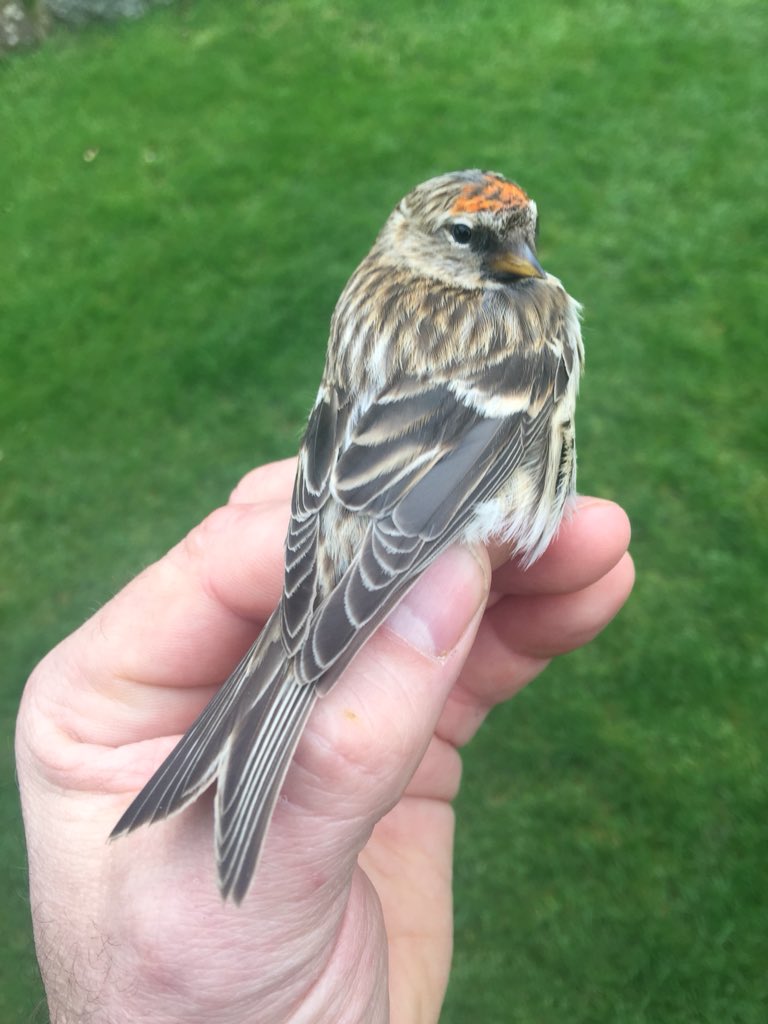It was an exciting day to be out in the field looking for birds. There was a significant increase in migrant numbers on yesterday, and it felt like anything could turn up at any moment. In the end, the first Spotted Flycatcher, Cuckoo and Common Redpoll (the latter ringed at the obs) of the year were probably the avian highlights of the day, although it's always fantastic to witness high numbers of common migrants passing through our little island.
Today's fantastic supporting cast included four Fulmars, a Gannet, a Grey Heron, a Sparrowhawk, a Buzzard, a Kestrel, a Merlin, two Peregrines, four Ringed Plovers, a Snipe, 14 Whimbrels, three Common Sandpipers, three Collared Doves, a Little Owl, six Sand Martins, 60 Swallows, a House Martin, a Tree Pipit, a Black Redstart, three Stonechats, 96 Wheatears, a Grasshopper Warbler, 12 Sedge Warblers, six Reed Warblers, 59 Blackcaps, 23 Chiffchaffs, 130 Willow Warblers, five Goldcrests, a Pied Flycatcher, a Rook, a Hooded Crow, four Chaffinches, three Siskins, 43 Goldfinches, 47 Linnets, seven Lesser Redpolls and two Bullfinches.
It was unanimously agreed by all that log be delayed by ten minutes so that we could watch the sun go down. It was particularly good one. We could clearly see the outline of the Wicklow Mountains.
This stunning Pied Flycatcher was ringed at the Observatory and spent much of the afternoon feeding in the surrounding gorse.
The first Spotted Flycatcher of the year.
Most of today's Wheatears were very richly coloured
Greenland birds (Oenanthe oenanthe leucorhoa).
The local breeders of the nominate race (Oenanthe oenanthe
oenanthe) are much paler.
Good numbers of Whimbrels are passing through, heading north to their breeding grounds in Iceland.

This stunning Pied Flycatcher was ringed at the Observatory and spent much of the afternoon feeding in the surrounding gorse.
The first Spotted Flycatcher of the year.
Most of today's Wheatears were very richly coloured
Greenland birds (Oenanthe oenanthe leucorhoa).
The local breeders of the nominate race (Oenanthe oenanthe
oenanthe) are much paler.
Good numbers of Whimbrels are passing through, heading north to their breeding grounds in Iceland.

An interesting 'Common' Redpoll - probably from one of the northwestern populations (Acanthis flammea islandica).






This is such an informative post. You have a lot of really great points. I wish I had this post as a resource when I started blogging.
ReplyDeleteBird Watching.